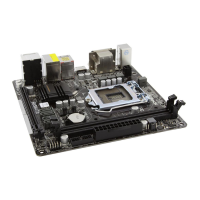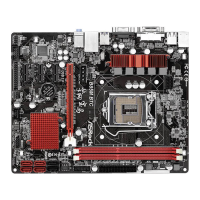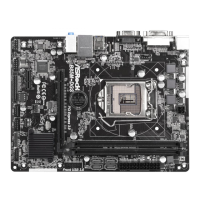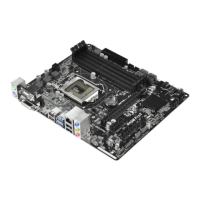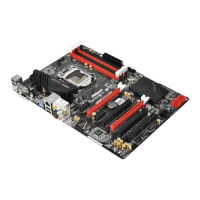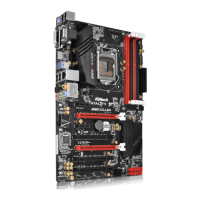
Do you have a question about the ASROCK B85M-HDS and is the answer not in the manual?
| Non-ECC | Yes |
|---|---|
| Memory channels | Dual-channel |
| Memory slots type | DIMM |
| Number of memory slots | 2 |
| Supported memory types | DDR3-SDRAM |
| Maximum internal memory | 16 GB |
| Supported memory clock speeds | 1066, 1333, 1600 MHz |
| Supported memory module capacities | 2GB, 4GB, 8GB |
| Processor socket | LGA 1150 (Socket H3) |
| Processor manufacturer | Intel |
| Compatible processor series | Intel Celeron, Intel Pentium |
| Maximum number of SMP processors | 1 |
| Number of SATA III connectors | 4 |
| Number of Parallel ATA connectors | 0 |
| USB 2.0 ports quantity | USB 2.0 ports have a data transmission speed of 480 Mbps, and are backwards compatible with USB 1.1 ports. You can connect all kinds of peripheral devices to them. |
| Component for | PC |
| Power source type | ATX |
| Motherboard chipset | Intel® B85 |
| Audio output channels | 5.1 channels |
| Motherboard form factor | micro ATX |
| Windows operating systems supported | Windows 7 Home Basic, Windows 7 Home Basic x64, Windows 7 Home Premium, Windows 7 Home Premium x64, Windows 7 Professional, Windows 7 Professional x64, Windows 7 Starter, Windows 7 Starter x64, Windows 7 Ultimate, Windows 7 Ultimate x64, Windows 8, Windows 8 Enterprise, Windows 8 Enterprise x64, Windows 8 Pro, Windows 8 Pro x64, Windows 8 x64 |
| Supported storage drive interfaces | SATA III |
| Maximum resolution | 1920 x 1200 pixels |
| Parallel processing technology support | - |
| PCI Express slots version | 2.0, 3.0 |
| Cables included | SATA |
| LAN controller | Realtek RTL8111G |
| Ethernet interface type | Fast Ethernet, Gigabit Ethernet |
| BIOS type | UEFI AMI |
| ACPI version | 1.1 |
| BIOS memory size | 64 Mbit |
| Width | - mm |
|---|
Lists items included in the motherboard package.
Details the technical specifications of the motherboard.
Highlights the special features and technologies of the motherboard.
Illustrates the physical layout and component placement on the motherboard.
Describes the rear panel input/output ports and their functions.
Essential safety and handling guidelines before installing components.
Step-by-step guide for installing the Central Processing Unit.
Instructions for mounting the CPU cooling fan and heatsink.
Procedures for inserting RAM modules into the motherboard slots.
Information on using PCI Express slots for expansion cards.
Explanation of jumper configurations for system settings.
Details on connecting internal case components to motherboard headers.
Guide for installing necessary drivers from the support CD.
Introduction and usage of ASRock's system utility software.
How to configure Intel's technology for faster system wake-up.
Setting up Intel's feature for updating apps during sleep.
Guide for installing and configuring the Start8 utility.
Overview of the UEFI Setup Utility and its interface.
Description of the main menu options in the UEFI interface.
Explanation of keyboard shortcuts for navigating the UEFI setup.
Displays system overview information upon entering UEFI.
Settings for overclocking CPU, DRAM, and other system parameters.
Access to detailed system configuration settings.
Options for configuring CPU features and performance.
Settings related to the motherboard's chipset and integrated components.
Management of SATA ports and storage devices.
Configuration for Intel's rapid hibernation technology.
Configuration for Intel's technology to update during sleep.
Settings for Super IO controller functions like serial ports.
Power management settings based on ACPI standards.
Settings for controlling USB ports and legacy support.
Configuration for Trusted Platform Module (TPM) security.
Access to various utility tools within the UEFI.
Monitoring system hardware status like temperature, fan speed, voltage.
Configuration of boot order, fast boot, and other boot-related settings.
Options for setting supervisor and user passwords, and secure boot.
Procedures for saving changes, discarding changes, or loading defaults.



